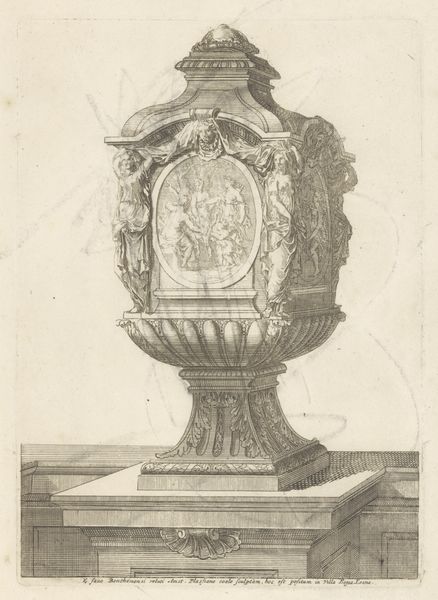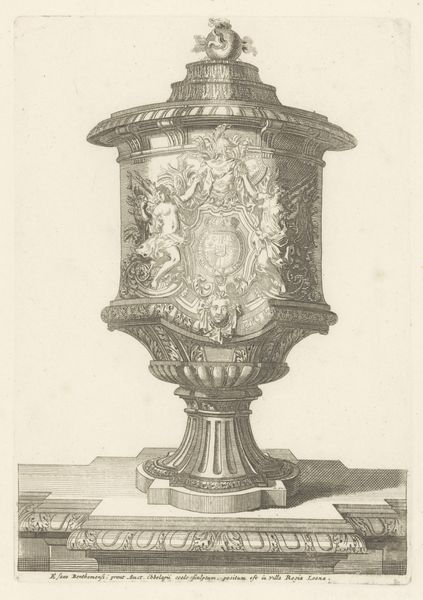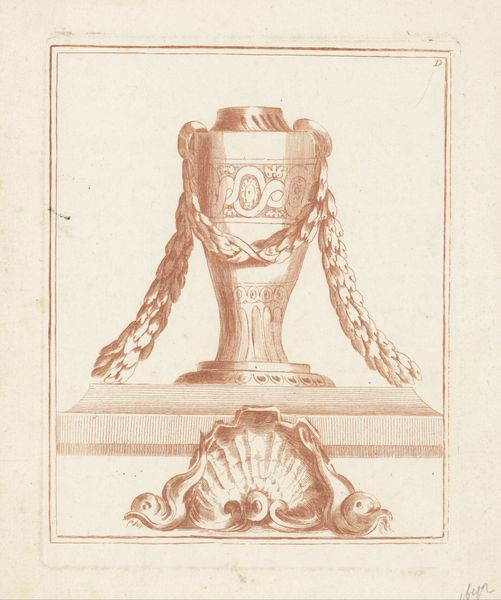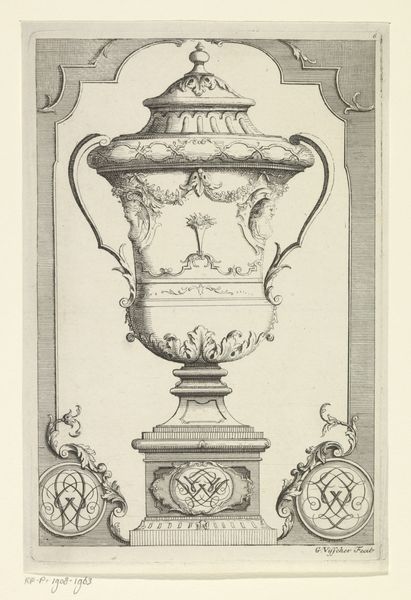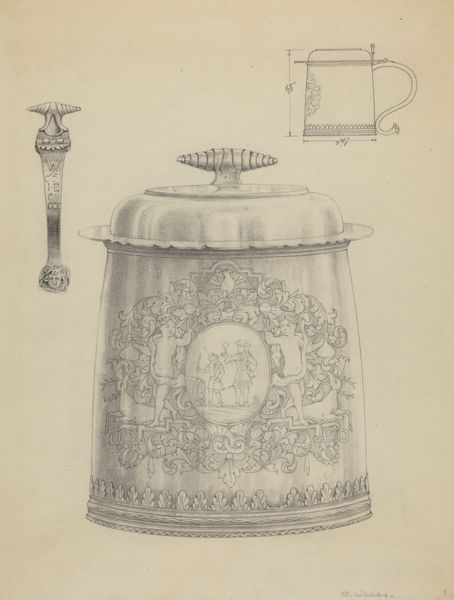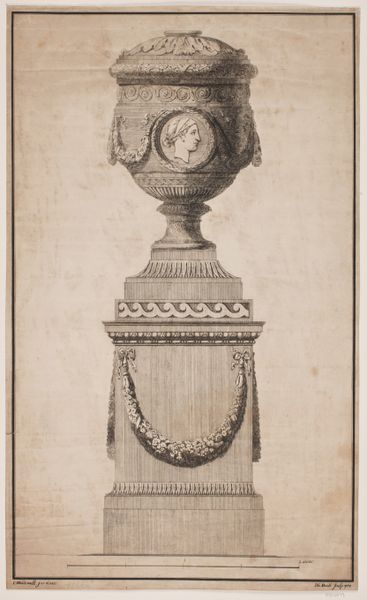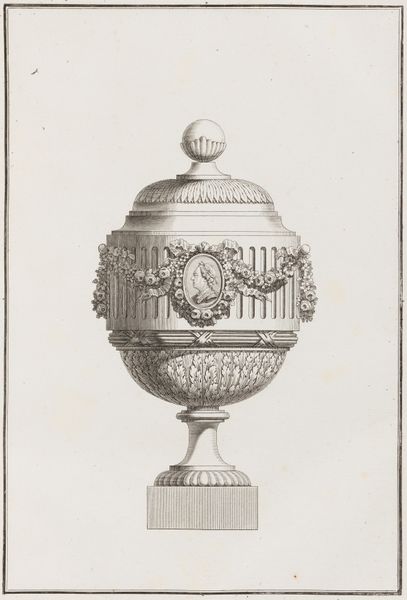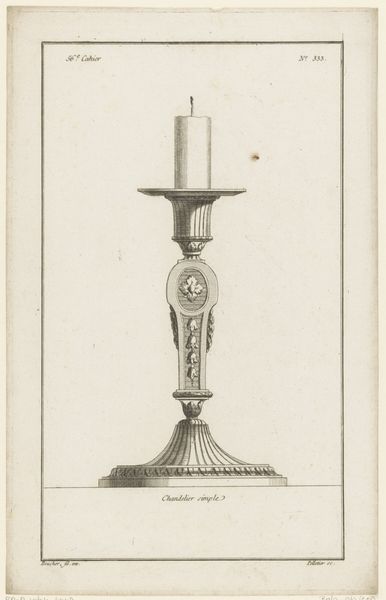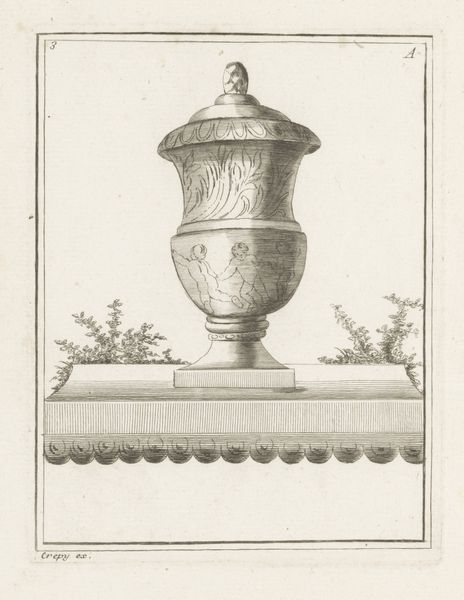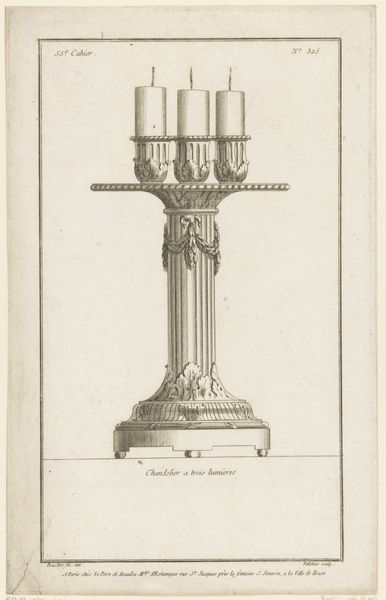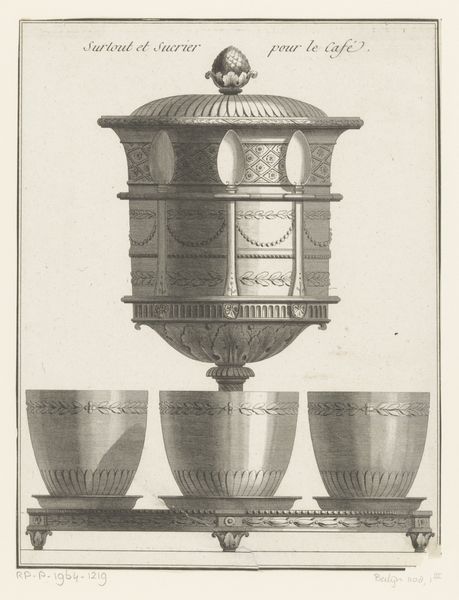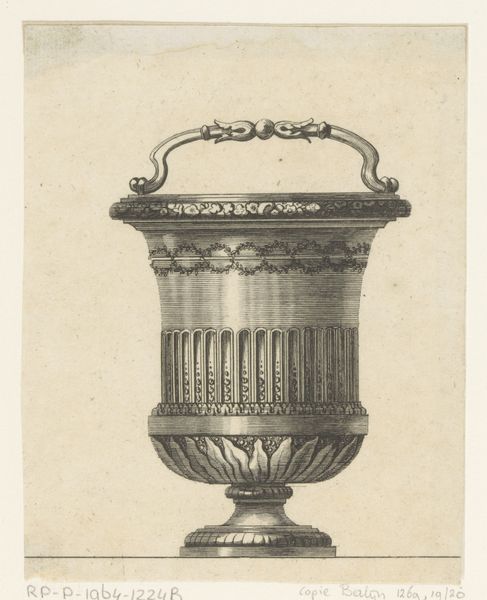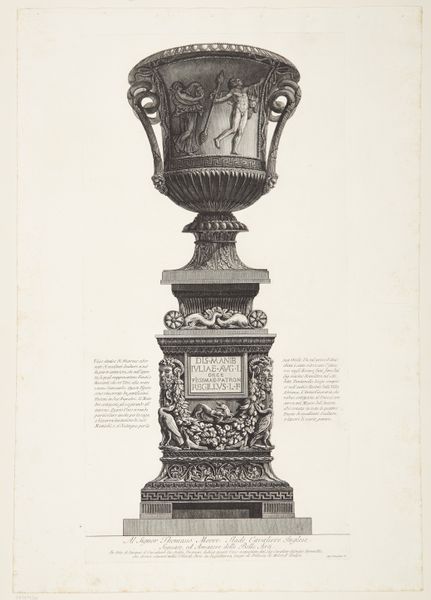
print, engraving
#
baroque
# print
#
old engraving style
#
form
#
pencil drawing
#
line
#
decorative-art
#
engraving
Dimensions: height 261 mm, width 178 mm
Copyright: Rijks Museum: Open Domain
Curator: Here we have an engraving dating from after 1703, entitled "Vaas met de triomf van Amphitrite" or "Vase with the Triumph of Amphitrite." It's an anonymous piece in the Rijksmuseum collection. Editor: It strikes me as intensely formal, almost severe. The vase is incredibly ornate, and the monochrome etching gives it an austere, almost academic quality. Curator: The artist, despite being unknown to us, demonstrates superb skill with line. There’s remarkable precision in rendering the intricate carvings. We see influences from the decorative arts and Baroque aesthetics—the emphasis on elaborate detail and complex forms is undeniable. Consider how this style reflected power. Editor: That triumph, as you say, isn't just about the vase, it's about projecting power, and I agree the vase seems secondary here. That’s intriguing. It invites one to consider Amphitrite, a relatively obscure sea goddess whose marriage to Poseidon calmed the seas, as less a figure of triumphant power and more a political actor, whose influence serves a social function in an allegory on leadership and calm ruling. The sea imagery certainly reinforces her domain. Curator: Indeed, the iconographic choice is powerful. I’m fascinated by how artists utilized classical myths to reflect on the political circumstances of their time. Images like these circulated through print, impacting social views far beyond their original aristocratic contexts. The visual vocabulary conveyed specific moral and political messages that society actively debated. Editor: And its purpose goes beyond decoration—these symbols become a language of cultural memory. I imagine educated viewers in the 18th century instantly recognized Amphitrite's connection to the sea, dominion and rulership, instantly interpreting and processing how to react to and process its political subtext. We could almost use this object as a prism, shining a light into a certain perspective about governance and power within that specific slice of history. Curator: Precisely! The vase embodies not merely the aesthetics of the period but also the social, cultural and power structures prevalent in that period. Looking at it reminds us of art's central place within a complex political theater. Editor: It's more than just decoration then, and more than just mythology; it is a dialogue within historical conditions and culture.
Comments
No comments
Be the first to comment and join the conversation on the ultimate creative platform.
